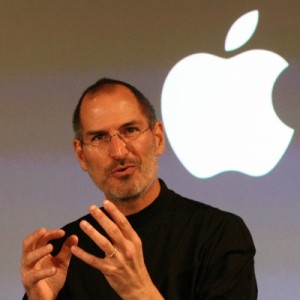Steve Jobs died at 56
“Start it and stick with it; change the world” – said the legendary entrepreneur. And change the world he did. Sadly, Steve Jobs died at his home on October 5, 2011, surrounded by the love of family. His legacy however, remains not only with family, and with his company Apple.
Steve Jobs’ legacy and genius will be studied and implemented by generations of internet startups to come.
The man whom BoingBoing writer, Xeni Jardin said “democratized technology” – once stated – “design isn’t about the way something looks or feels, design is in the way something works.” Jobs was interested in having Apple connect with consumers; he wanted the Mac to be a consumer PC. He wanted to create products that would help the average person use technology.
As Gizmodo’s editor, Matt Buchanan, stated today in a television interview, because of Jobs: “everyone has a computer in their pocket.” This idea alone—making technology hip and simple for the average person—could be a single lesson for internet startups.
However, Jobs’ vision reveals several indirect messages to internet startups.
In almost 30 years of covering the personal computer revolution, I only ever met Steve Jobs in person twice, though I attended many Macworld events at which he was the star speaker.
He changed quite dramatically in that time, from the effusive, burbling over-enthusiastic promoter to a razor-focused pragmatic visionary determined to get his way.
My first meeting with Steve was in January 1984 at the unveiling of the first Apple Macintosh, when, clad in an Armani suit and sneakers, he hosted a session for UK, Asian and Australian IT journalists at Apple’s Cupertino, California headquarters.
The Mac was something totally new – a computer handled not by cryptic typed commands, but by a mouse controlling graphic stuff on a screen.
Our hearts and minds had to be won, and it was Mr Nice Guy, gushing Steve, who greeted us. “Wow guys, it’s so great to see you” – he said.
“Before we talk about the Macintosh, I want each person in the room to talk for two minutes about themselves.” And we did, with Steve nodding understandingly at everyone’s revelations about their adolescence or dreams.
But later when someone I think it was Jack Spackman, an Aussie journo based in Hong Kong mentioned he had seen a Hewlett-Packard PC which users controlled by touching their fingers to icons on a screen, the Jobs eyes closed to slits.
“Listen to me” – he snapped and everyone in the room froze. “The mouse is the pointing device for the rest of this century. Nothing else will have a look in.”
Jobs was right, of course, though 11 years into this century, touchscreens are indeed steadily replacing the mouse.
But gushing Steve quickly returned. “Hey guys, have a nice day I’ve got some work to do” – he said, grabbing a Danish pastry and coffee as he exited the room. As he bit into it the pastry dripped apricot jam onto his nice Armani suit, but Steve just gave us all a grin.
The grins were gone when I next saw Steve Jobs in Boston in 1997. It was 12 years after he had been bundled out of his beloved Apple by John Sculley, the Pepsi salesman he had personally recruited to run the company, and had been brought back to save the company from what seemed certain death.
http://www.youtube.com/watch?v=w2brxMs6Tb4
Here is the memory that came up when I heard Steve Jobs was dead, the image that’s probably stuck in my mind, the cover to the mental photo album that will inevitably be retrieved whenever someone talks about him.
It’s January 2010. He’s sitting in a chair, black leather, comfy, Le Corbusier. He’s got this lonely Eero Saarinen table next to him (a mutant white tulip that failed to bloom properly), but he’s ignoring it. He’s got his dumb, eternal mock turtleneck and blue jeans flooded a few inches above his running shoes, and his left ankle is dangling in an ungainly fashion over his right knee.
He’s talking to you. But he’s not looking at you. His gaze (normally directed to some abstract space in the auditorium that he senses but that you can’t see) is given to the gadget in his lap. The gadget’s screen is projected into a larger screen on the back of stage, maybe 11 times as tall as Steve Jobs. Look at him – He’s like someone petting a beloved cat in his lap, only his pet is the iPad, and all his coddling is to show us what he thinks the future of computing is.
And the 18 or so months that have passed since the iPad launched have proven him right. The iPad still controls 80 percent of the North American tablet market, and is steadily eating away at the PC market – of which Apple has long been a fringe company, commanding at best a 5% market share.
Yes, fringe. But one of Steve Jobs’ legacies is exploring the power of the fringe. In any given year of the past decade, Dell and HP may have sold more PC units running Microsoft Windows than Apple did, but neither company has sold them at the profit margin of Macbooks. The bottom-line financials are the same with iPhones vs. Android phones, and iPads vs. other tablets – including the Kindle Fire, which Amazon is selling at a loss.
